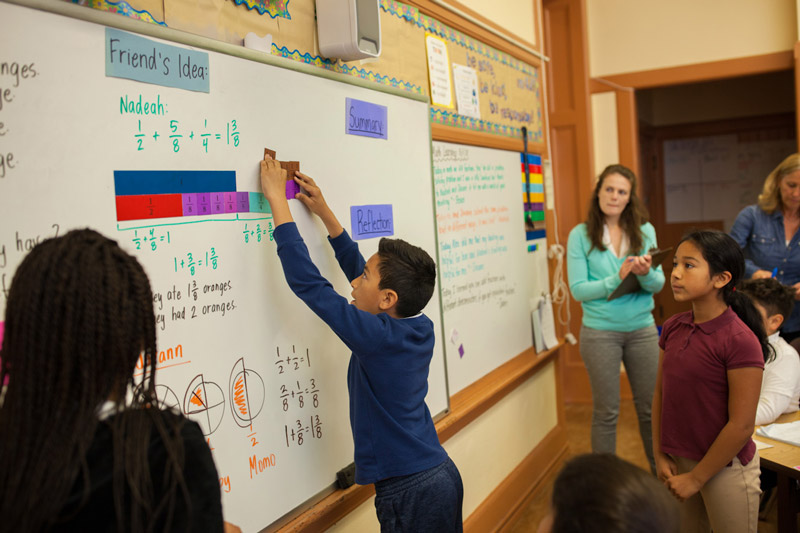What is Teaching Through Problem-Solving?
In Teaching Through Problem-solving (TTP), students learn new mathematics by solving problems. Students grapple with a novel problem, present and discuss solution strategies, and together build the next concept or procedure in the mathematics curriculum.
Teaching Through Problem-solving is widespread in Japan, where students solve problems before a solution method or procedure is taught. In contrast, U.S. students spend most of their time doing exercises– completing problems for which a solution method has already been taught.
Why Teaching Through Problem-Solving?
As students build their mathematical knowledge, they also:
- Learn to reason mathematically, using prior knowledge to build new ideas
- See the power of their explanations and carefully written work to spark insights for themselves and their classmates
- Expect mathematics to make sense
- Enjoy solving unfamiliar problems
- Experience mathematical discoveries that naturally deepen their perseverance
Phases of a TTP Lesson
Teaching Through Problem-solving flows through four phases as students 1. Grasp the problem, 2. Try to solve the problem independently, 3. Present and discuss their work (selected strategies), and 4. Summarize and reflect.
Click on the arrows below to find out what students and teachers do during each phase and to see video examples.
WHAT STUDENTS DO
- Understand the problem and develop interest in solving it.
- Consider what they know that might help them solve the problem.
WHAT TEACHERS DO
- Show several student journal reflections from the prior lesson.
- Pose a problem that students do not yet know how to solve.
- Interest students in the problem and in thinking about their own related knowledge.
VIDEO
WHAT STUDENTS DO
- Independently try to solve the problem.
- Do not simply following the teacher’s solution example.
- Allow classmates to provide input after some independent thinking time.
WHAT TEACHERS DO
- Circulate, using seating chart to note each student’s solution approach.
- Identify work to be presented and discussed at board.
- Ask individual questions to spark more thinking if some students finish quickly or don’t get started.
VIDEO
WHAT STUDENTS DO
- Present and explain solution ideas at the board, are questioned by classmates and teacher. (2-3 students per lesson)
- Actively make sense of the presented work and draw out key mathematical points. (All students)
- Allow classmates to provide input after some independent thinking time.
WHAT TEACHERS DO
- Strategically select and sequence student presentations of work at the board, to build the new mathematics. (Incorrect approaches may be included.)
- Monitor student discussion: Are all students noticing the important mathematical ideas?
- Add teacher moves (questions, turn-and-talk, votes) as needed to build important mathematics.
VIDEO
WHAT STUDENTS DO
- Consider what they learned and share their thoughts with class, to help formulate class summary of learning. Copy summary into journal.
- Write journal reflection on their own learning from the lesson.
WHAT TEACHERS DO
- Write on the board a brief summary of what the class learned during the lesson, using student ideas and words where possible.
- Ask students to write in their journals about what they learned during the lesson.
VIDEO
How Do Teachers Support Problem-solving?
Although students do much of the talking and questioning in a TTP lesson, teachers play a crucial role. The widely-known 5 Practices for Orchestrating Mathematical Discussions were based in part on TTP. Teachers study the curriculum, anticipate student thinking, and select and sequence the student presentations that allow the class to build the new mathematics. Classroom routines for presentation and discussion of student work, board organization, and reflective mathematics journals work together to allow students to do the mathematical heavy lifting. To learn more about journals, board work, and discussion in TTP, as well as see other TTP resources and examples of TTP in action, click on the respective tabs near the top of this page.

